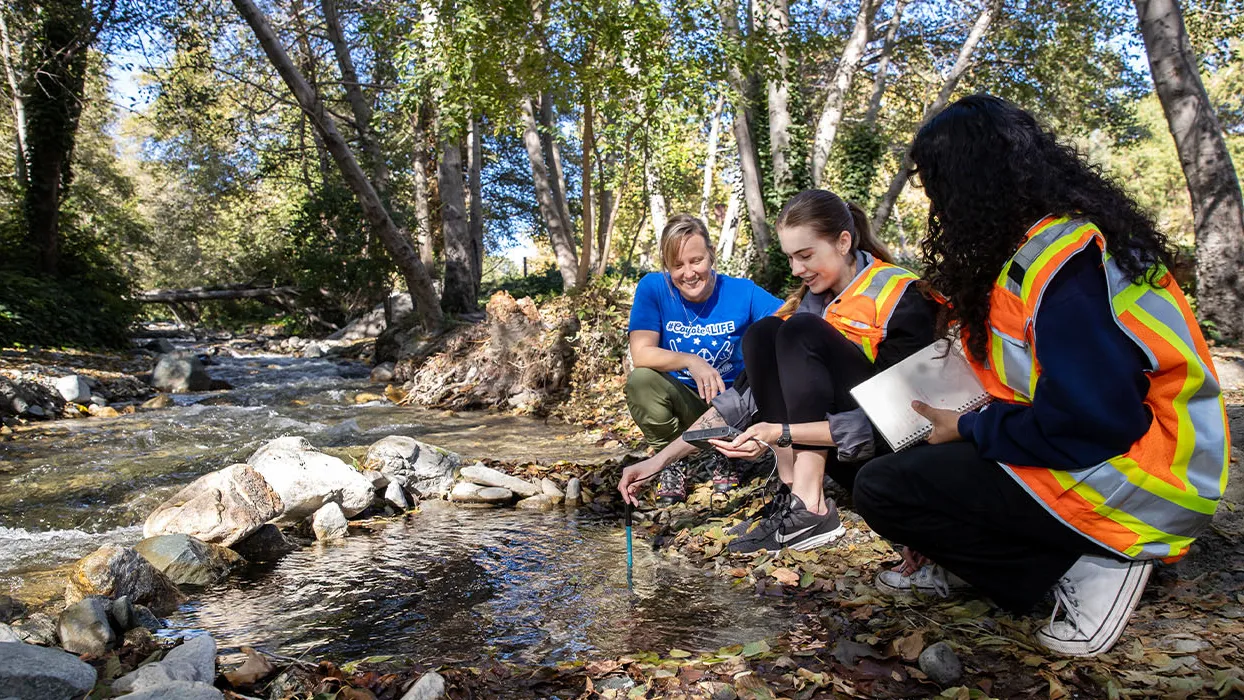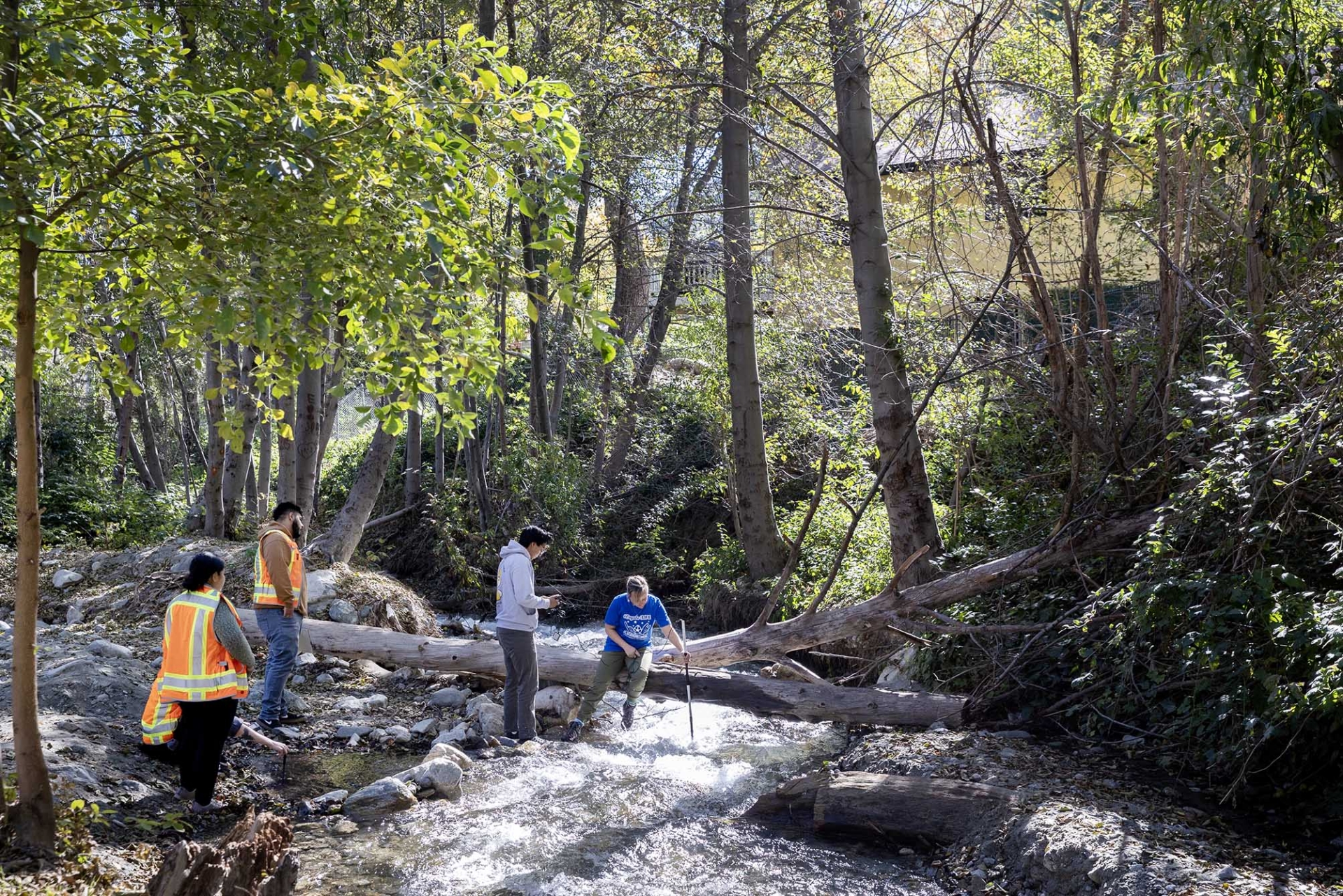Alan Llavore | Office of Strategic Communication | (909) 537-5007 | allavore@csusb.edu

A watershed moment, defined as a pivotal turning point or a moment of transformation, aptly characterizes the emergence of Cal State San Bernardino's newly created Institute for Watershed Resiliency (IWR). The institute transcends traditional academic boundaries to address complex water-related issues that resonate across disciplines and deeply impact Inland Empire communities.
“When we think about watersheds, it's the way the water is flowing down to a central river or central ocean or lake. It's where we come together, in many ways. Water is the central thing that connects us,” said Jennifer Alford, director of the IWR who also serves as the interim chair of the Department of Geography and Environmental Studies.
The institute’s overarching goal is to make connections with students and faculty, across academic disciplines and with the greater community, with a primary focus on workforce development for students.
Cal State San Bernadino has long been involved in water-related issues. In 1999, its Water Resources Institute was established at the Palm Desert Campus to examine issues related to water resources and to create an archive for water resources-related materials. But in recent years, changes in leadership provided an opportunity “to reimagine what we could be amidst the current interdisciplinary landscape,” Alford said. The result is the IWR, now in its first full academic year of operation.
Alford emphasized that water issues go beyond traditional academic silos.
“When we think of the study of water, there are really a lot of different connections academically. The ones that most people think of right off the bat are in the College of Natural Sciences, where there are geologists, chemists, biologists, as well as public health,” Alford said. But water issues are studied across many academic disciplines, including education, history, English, social science, business, cybersecurity and public administration, she added.
Since joining the CSUSB faculty in 2017, Alford's leadership role and engagement with numerous community boards and committees exposed her to the vast potential for water-related projects with diverse agencies. This experience fueled her vision for the IWR, which focuses on forging connections with community partners. The aim is to provide students with meaningful, real-world experiences that bridge the gap between classroom learning, career pathways and community engagement.
“One thing that's unique about our campus is that a lot of students are from this area and they plan to stay in this area. So, there's an opportunity for us to make all those connections a lot sooner and try to help identify and resolve issues but also give students really great, meaningful experiences.”

The IWR has established a pathway for students to gain diverse career experiences through apprenticeships, fellowships, and professional development incentive programs, all of which come with funding resources. These initiatives allow students to explore various facets of water-related careers within different agencies and organizations.
“I see this as a testing ground for students to really find their passion,” Alford said. “A water agency or organization may have a marketing team, they have a whole finance team, they need people with all these different types of skill sets.”
Many of the partnerships, Alford noted, “are with alumni, students I've taught before who are now in leadership roles in organizations, and we’re bringing the next cohort of students into that environment,” she said. “We're creating that feedback loop with these opportunities, so it's been really gratifying. We've had students that go to workshops and get professional development certificates before they even graduate. And the students are working with alumni who are now community partners that make it happen.”
Last year, four students had year-round funded projects and fellowships — this year there will be eight.
“San Bernardino Valley Municipal Water District is funding five student fellows for the year and they're going to get really diverse experiences,” she said. “They're going to have field experiences, they’ll see what regulatory policy means on the ground, not just in a PowerPoint or a textbook, and they'll interact with different agency staff and partners. So, they’ll also have networking opportunities and all the experiences that come along with that.”
The IWR is also partnering with the Inland Empire Resource Conservation District on an ongoing project to help raise community awareness about fires, recognizing the intricate connection between fires and water security and addressing complex ecological interdependencies. Last year, three students were funded to work with them, and this year, three more students received funding, Alford said.
“There are a lot of things that are in place right now,” said Alford. “We have a really dynamic watershed. We have the mountains, the desert, and we've seen how we're all connected, with and without water, and we're all really reliant on that.
“This is that opportunity to think across the cultural landscape, the economic landscape and the environmental landscape, and see how we can be more connected across those activities,” Alford said. “By fostering meaningful connections and partnerships, we can see the power of collaborative efforts in addressing these challenges and shaping a more sustainable future for our students, the community and the environment.”